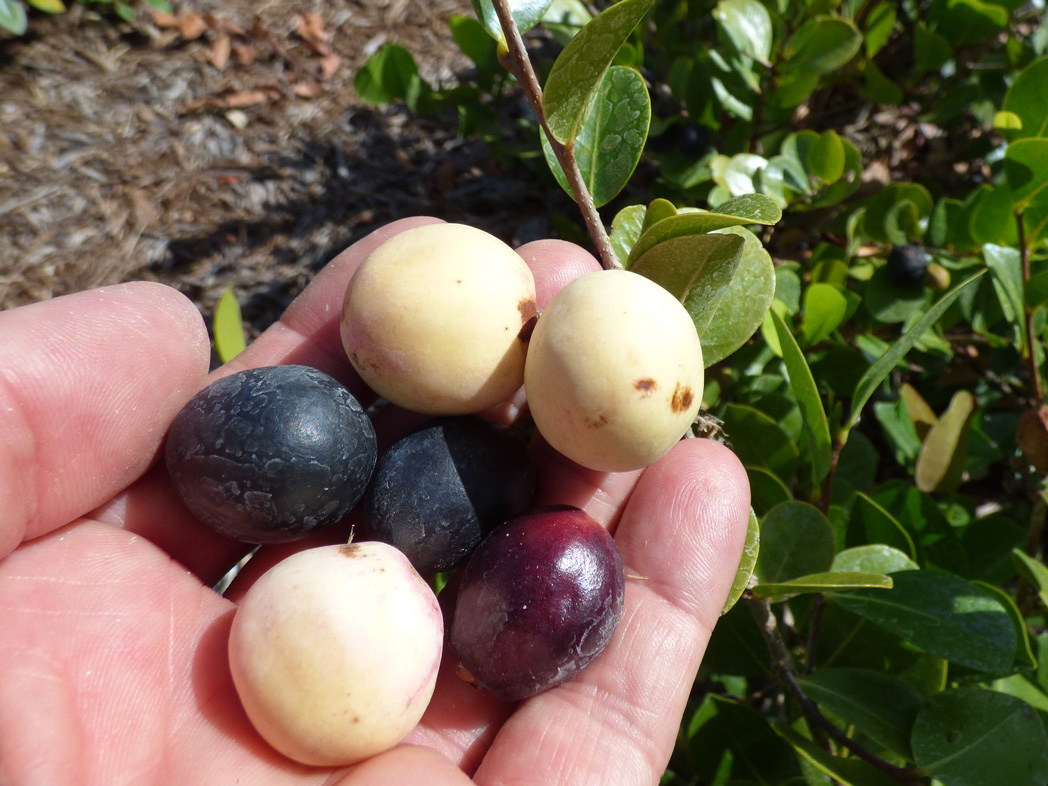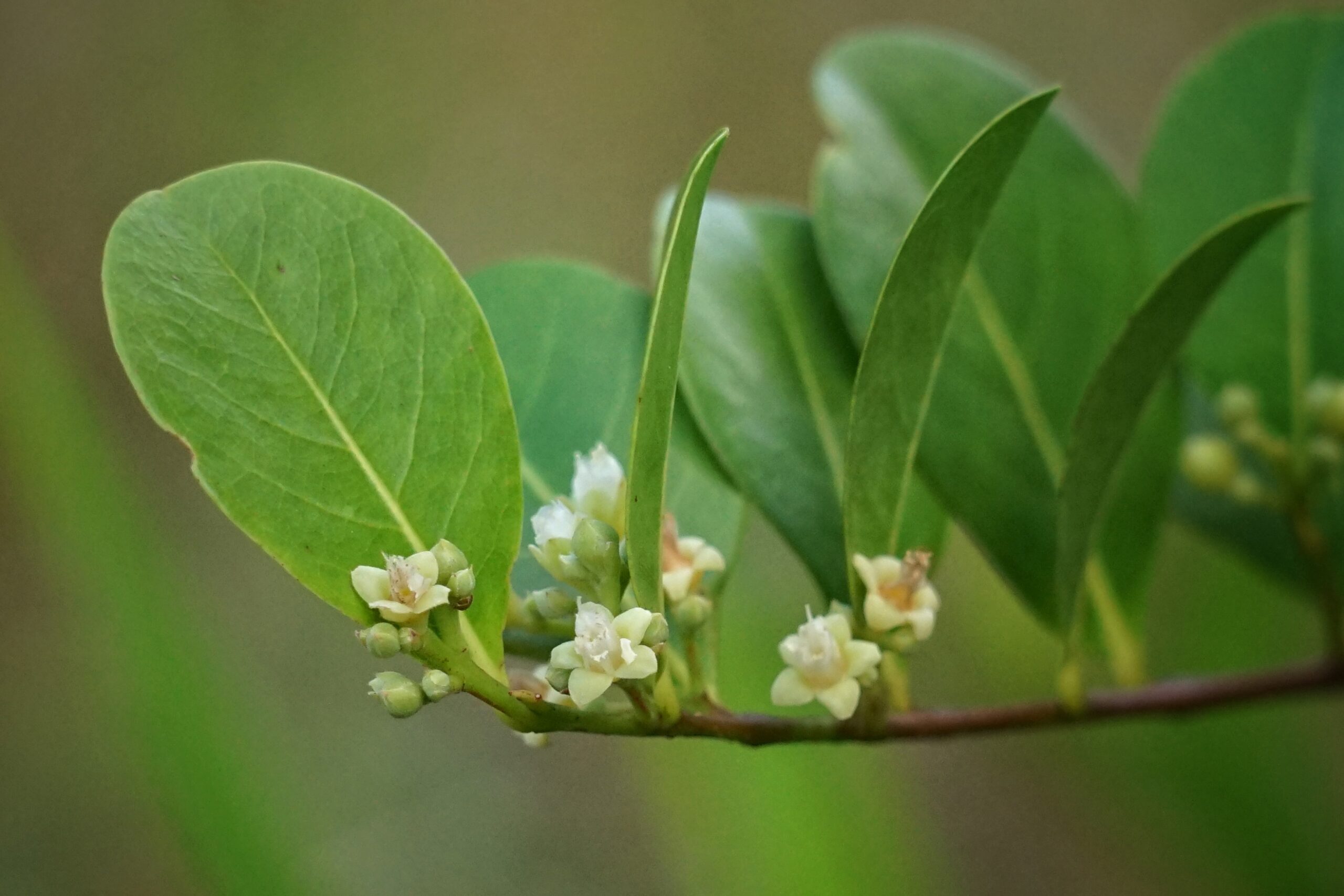Cocoplum
Pictured above: Cocoplum (Chrysobalanus icaco) by Emily Bell. Click on terms for botanical definitions. View post as a PDF.
Cocoplum (Chrysobalanus icaco) is an evergreen shrub or small tree native to swamps, coastal dunes and hammocks in Central and South Florida. It produces flowers and fruits throughout the year, with the peak bloom occurring winter through spring. Its dense foliage and substantial fruit provide cover and food for many birds and small wildlife. Flowers attract pollinators, especially bees.

Cocoplum’s inconspicuous flowers are white to greenish-white and born in clusters at the leaf base. Leaves are leathery, broadly ovate to round, and up to 3 inches long. They have a pointy tip, a short petiole and are bright green, often with a reddish tint. They are alternately arranged but tend to grow upward, appearing as if they are growing on the same side of the stem. Cocoplum fruit is a drupe that can vary in color from white to pinkish to dark purple. Each drupe contains a single seed encased in a stone. The trunk is multi-branched with brown or reddish-brown bark.
The flesh of Cocoplum fruit can be made into a tasty jam, while the oil-rich seed (once removed from its hard stone) can be eaten raw or cooked.
Family: Chrysobalanaceae (Cocoplum family)
Native range: Coastal counties from Brevard and Sarasota south, Pasco County and the Keys
To see where natural populations of Cocoplum have been vouchered, visit florida.plantatlas.usf.edu.
Lifespan: Perennial
Soil: Moist to wet, well- or poorly drained sandy, calcareous or organic soils
Exposure: Full sun to partial shade
Growth habit: 5–20’+ tall, 3–10’ wide
Propagation: Cleaned seeds germinate slowly and may not be true to type. Air-layering and cuttings are most effective in preserving varieties.
Florida regions of landscape suitability: Central, South
Garden tips: Cocoplum produces more fruit and denser vegetation when planted in full sun. It is an excellent choice for a hedge or buffer planting, and also works well as a specimen or accent shrub. The plant adapts well to a variety of landscape conditions and is tolerant of drought and high winds.
Note: Both spreading and erect forms of Cocoplum exist. The coastal-growing “Horizontal” variety is low-growing, spreading and salt-tolerant. Its creeping branches root where they touch the ground, so it is a good plant for dune stabilization and to help prevent erosion. The inland-growing “Red tip” and “Green tip” varieties grow in a more upright form and are not salt-tolerant. All varieties can hybridize when grown in proximity of another variety. Be sure to choose the variety and form best suited to your landscape.
Cocoplum is available from nurseries that specialize in Florida native plants. Visit www.PlantRealFlorida.org to find a nursery in your area.
Learn more about Cocoplum from the Florida Native Plant Society and the Institute for Regional Conservation.

